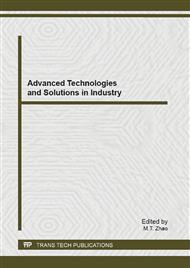p.41
p.45
p.50
p.55
p.60
p.67
p.72
p.76
p.80
Study of Physical Properties of Poly(vinyl alcohol) - Collagen Hydrogels Using a Response Surface Methodology
Abstract:
A novel covalent bond cross-linked poly (vinyl alcohol) (PVA) collagen hydrogel was prepared and the physical properties were studied. The carboxyl groups were introduced into PVA through the reaction with chloroacetic acid. The EDC and NHS were used as cross-linker. The hydrogels were prepared by repeated freezing and thawing. For a better understanding of the influence of the parameters and their interaction, three factors were investigated by a response surface methodology. The physical properties of the hydrogels were analyzed. The results indicated that the response surface models could significantly fit the response values. Moreover, comparing with the single factor, the interactions between factors had more obvious effects to the physical properties of PVA-Collagen hydrogels. After the analysis of factors influences and investigation of the data and trends, the structure of the hydrogels might be the driving force of the different physical behaviors.
Info:
Periodical:
Pages:
60-66
Citation:
Online since:
June 2013
Authors:
Price:
Сopyright:
© 2013 Trans Tech Publications Ltd. All Rights Reserved
Share:
Citation:


